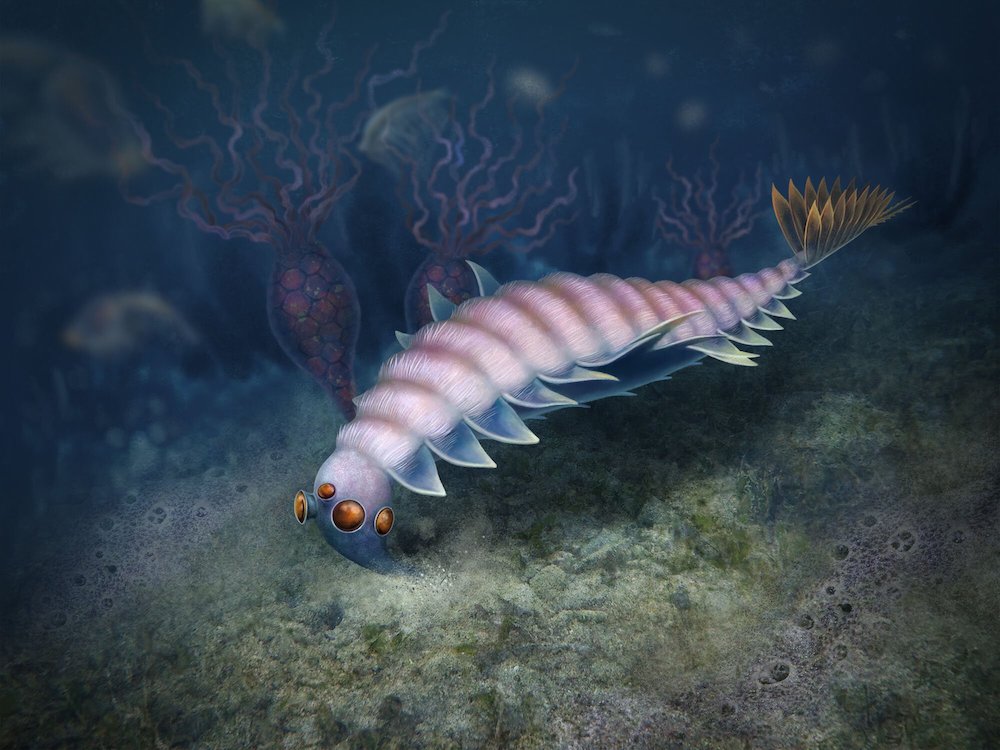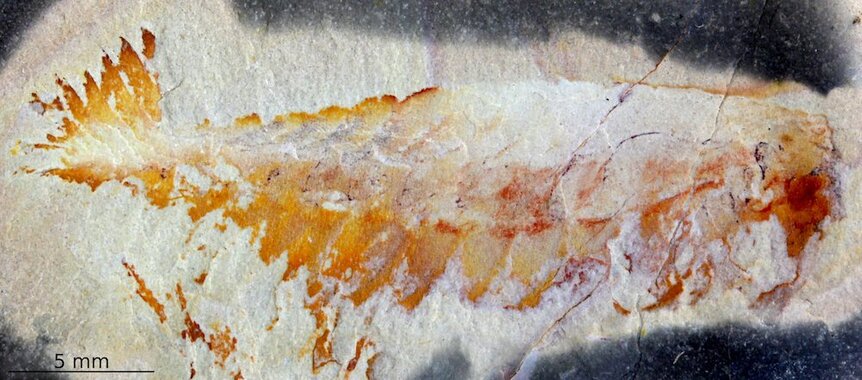Create a free profile to get unlimited access to exclusive videos, sweepstakes, and more!
What even is that thing? The weirdest arthropod evolution could think of just got weirder
Sometimes, evolution can get really creative.

This is definitely one creature you wouldn’t want to run into in a dark alley, at least if you were around 500 million years ago.
Utaurora comosa appears to have spawned on another planet. It had five eyes, a tail with spines like serrated knives, strange swimming flaps, and a mouth that faced backwards under a huge proboscis. However alien it appears, it lurked on Earth about 500 million years ago during the Cambrian period, when evolution got especially creative. Now the freak of nature that was thought to be a radiodont is actually the second opabiniid that has ever emerged.
There was only one opabiniid species thought to have existed. Opabinia regalis was another proto-arthropod that could have starred in its own sci-fi horror movie, with features that appear vaguely related to Utaurora. This is why researchers Joanna Wolfe of Harvard University and Steven Pates of the University of Kansas suspected Utaurora wasn’t the radiodont it was thought to be. They recently published their findings in Proceedings of the Royal Society B.
“Some of the things noticed on Utaurora were the dorsal furrows, and the proboscis looking quite a bit like Opabinia,” Wolfe told SYFY WIRE. “The tail fan did indeed look like the radiodont Anomalocaris, and the pattern of setae looked like no other species known.”
They could have all passed for Lovecraftian abominations, but there is a difference between radiodonts and opabiniids. Anomalocaris could grow up to six feet long and was called the “terror of the Cambrian” for a reason. Like other radiodonts (meaning “radiating teeth”), it had bulging compound eyes on stalks, each with millions of lenses to hunt in the watery depths. Spiky appendages and a mouth full of serrated teeth could grab and shred prey. Its segmented body and fanned tail were eerily similar to those of Opabinia and Utaurora — but wait.
When Utaurora surfaced in 2008, not as much was known about radiodonts for scientists to set it apart from them. Fast-forward more than a decade. The fossil was so exceptionally preserved that even its setae, hairlike structures that were kind of like transducers, were visible enough for Pates and Wolfe to make out that they were different from anything else they had ever seen. In arthropods, these sense pressure and morph it into an electrical signal that is zapped to the brain. Phylogenetic analysis was the only way to make sense of what Utaurora actually was.
“We compared Utaurora's anatomy to various other radiodonts, arthropods, etc. Then we used that data matrix to search for the best trees,” said Wolfe. “You do not actually find a single best tree, but several. 68% of the trees that fit the data supported Utaurora with Opabinia.”
When you have no DNA, phylogenetic analysis can help you figure out what an organism probably evolved from and what else it is related to, with branches that reach from the last common ancestor to the organisms that most recently existed or still exist. Both Utaurora and Opabinia fit into several arthropod trees. Think of them as ancestral cousins to arthropods. They are segmented like lobsters, shrimp, and many insects, and their swimming appendages were like primitive versions of legs or fins. However, radiodont trees only matched 4% of the results.
Opabiniids were apparently not a one-species wonder. Now that more is known about radiodonts and new species have been unearthed, it has become apparent that opabiniids were something entirely different, though both opabiniids and radiodonts seem to be extinct phases of arthropod evolution. Why they evolved that frightening proboscis and backwards mouth is unknown. Wolfe thinks it might have helped them shove food in their mouths. Arthropods kept specializing body segments for swimming, walking or feeding long after Utaurora vanished.
“We do know that the success of arthropods is that they can specialize to all habitats and lifestyles,” she said. “Perhaps opabiniids were not able to do so, but I wish they were.”



























